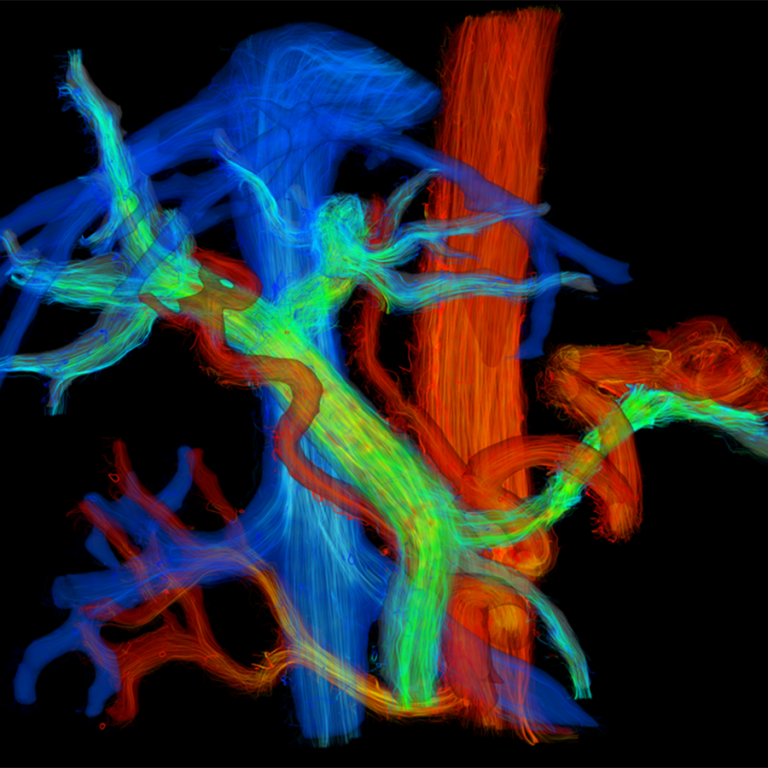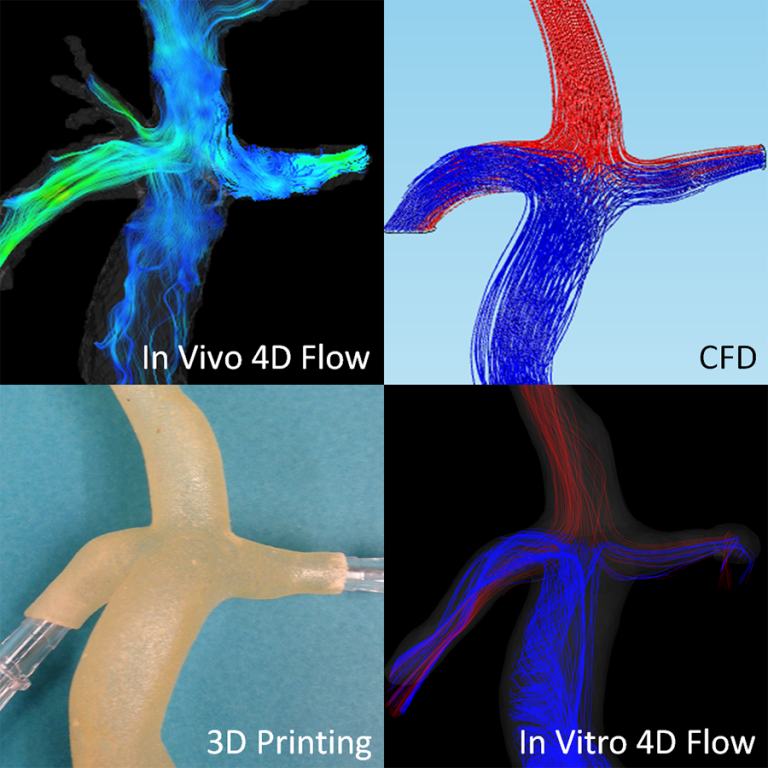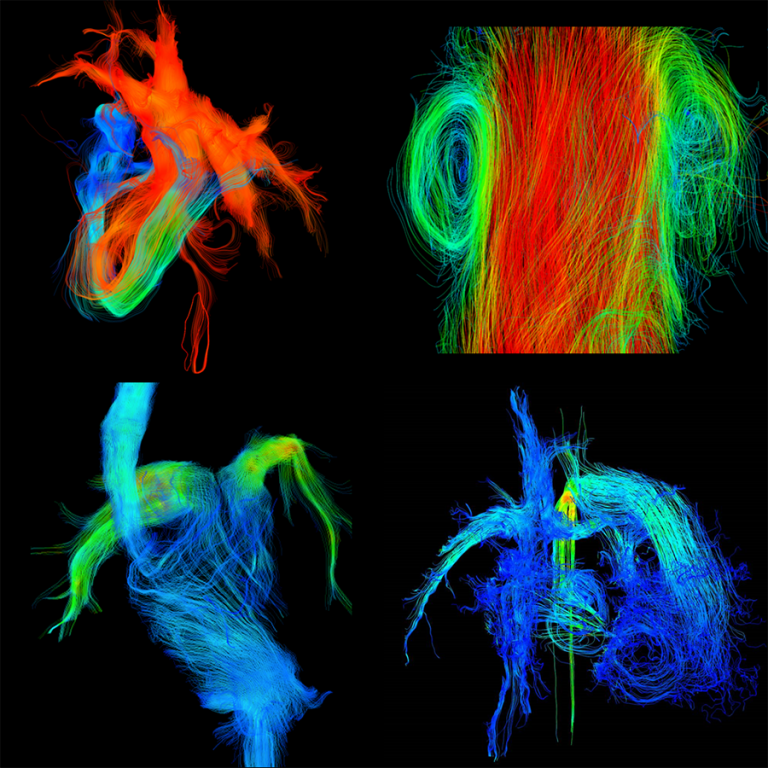Overview
The Cardiovascular Imaging Section at the University of Wisconsin School of Medicine and Public Health has a long history of successful NIH and private grant funding. We currently have active, externally funded research programs in four-dimensional (4D) flow MRI; novel, rapid, quantitative cardiac MRI techniques; functional lung MRI; pulmonary magnetic resonance angiography; and low-dose cardiovascular CT.
The section works closely with the CT Research and MRI Research groups, as well as collaborators in the Departments of Medical Physics , Mechanical Engineering, and Biomedical Engineering , in developing and validating non-invasive cardiovascular imaging techniques. The Cardiac and Flow MRI Research (CFMR) group, Liver Imaging Research Program (LIRP), and Cardiovascular Fluid Dynamics (CVFD) laboratory have a track record of extramural funding and publication.

Liver Imaging Research Program (LIRP)
The University of Wisconsin-Madison is a recognized world leader in the development, validation, and clinical implementation of advanced methods for abdominal MRI. The group is well known for pioneering work in quantitative biomarkers of liver fat and iron overload and for work in 4D flow MRI methods to evaluate complex flow patterns in the abdominal vasculature. The group works closely with the UW MR Physics Group and GE Healthcare on the development and translation of pioneering imaging methods aimed at evaluating abdominal diseases. The MRI group has over $5 million in NIH-funded projects and over 100 peer-reviewed publications aimed specifically at improved abdominal and pelvic imaging. Clinical services include a wide range of imaging protocols including advanced liver MRI and MRCP, quantitative imaging of fat, iron, and fibrosis, quantitative flow measurements in the abdominal vasculature, and MR enterography for patients with Crohn’s disease, among others.


Cardiovascular Fluid Dynamics (CVFD) laboratory
Professor Roldán-Alzate directs the UW Cardiovascular Fluid Dynamics laboratory which focuses its research on fluid dynamics analysis of physiological and pathological flows using a combination of medical imaging, additive manufacturing and computational fluid dynamics. The main lines of research include: medical image-based patient-specific computational fluid dynamics, patient-specific surgical planning using medical images, 3D printing and computational fluid dynamics and hemodynamic analysis of cardiovascular pathologies using 4D flow MRI and particle image velocimetry.
Cardiac and Flow MRI Research Group
The University of Wisconsin-Madison is a recognized world leader in the development, validation and clinical implementation of advanced cardiovascular MRI techniques. The group is well known for pioneering pre-clinical and clinical work in highly accelerated cardiac MRI and 4D flow MRI methods. Our group has been and continues to be funded to develop and implement 4D flow MRI techniques for the evaluation of congenital heart disease, pulmonary hypertension, mesenteric and portal vascular disease, renovascular disease, neurovascular disease, and pelvic blood flow during pregnancy. More recently, we have applied our accelerated cardiac MRI techniques to perform exercise stress cardiac MRI studies in collaboration with colleagues in biomedical engineering, cardiology and pulmonary medicine.